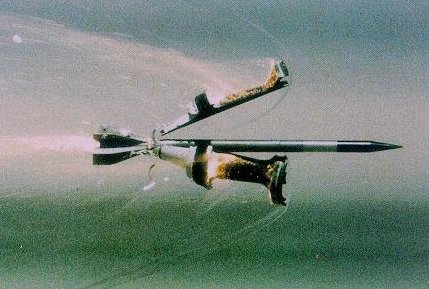A gas is not an incompressible fluid, so there aren't any pressure multiplication effects at work here. Your ball valve (which won't even be half way open by the time the projectile leaves the barrel) will choke flow flow on most barrels, unless you get it opening a lot faster than usual. The only time that chamber diameter is a problem is the exceedingly rare case of the valve having a higher effective porting diameter than the chamber does.My dad tells me that, in regards to gaining power (in a pneumatic launcher): With a chamber diameter of, for example, 3", one would have to have a barrel diameter of 2" or so, otherwise very little energy would be imparted to the projectile. Is this true ?
And if this is true, would a conversion from 3" down to 2.5" be enough to achieve the aforementioned benefits?
It is a widely believed myth that heavier projectiles require a larger volume of propellant gas to be effective. The reality of it is actually quite the opposite - for a given barrel length and pressure, a lighter projectile will actually need a larger chamber than a heavy one will. It has to do with the maintenance of high pressure required to keep drag and SOS limitations from slowing down the light projectile.
Also, I revised the quote slightly so that it doesn't look like you wrote it in Swahili, then translated it through Mandarin, Portuguese, and French with an online translator program before putting it back into English.











